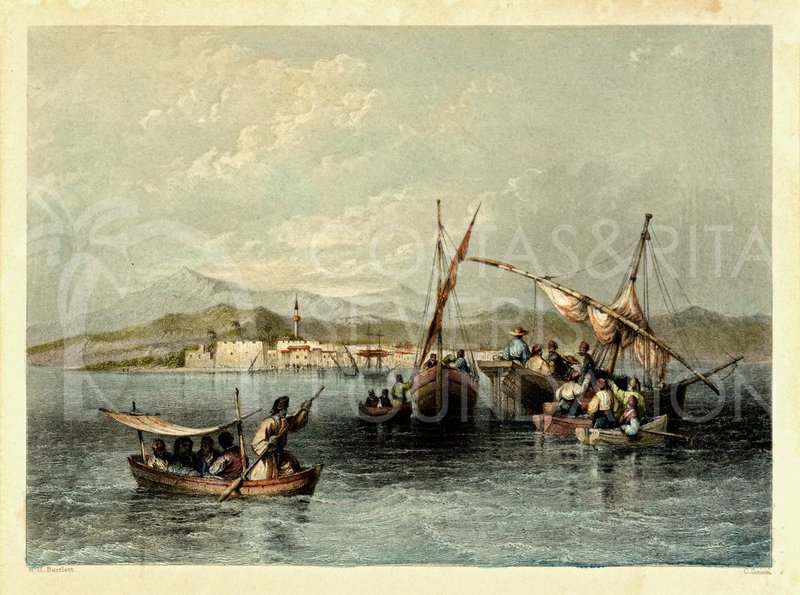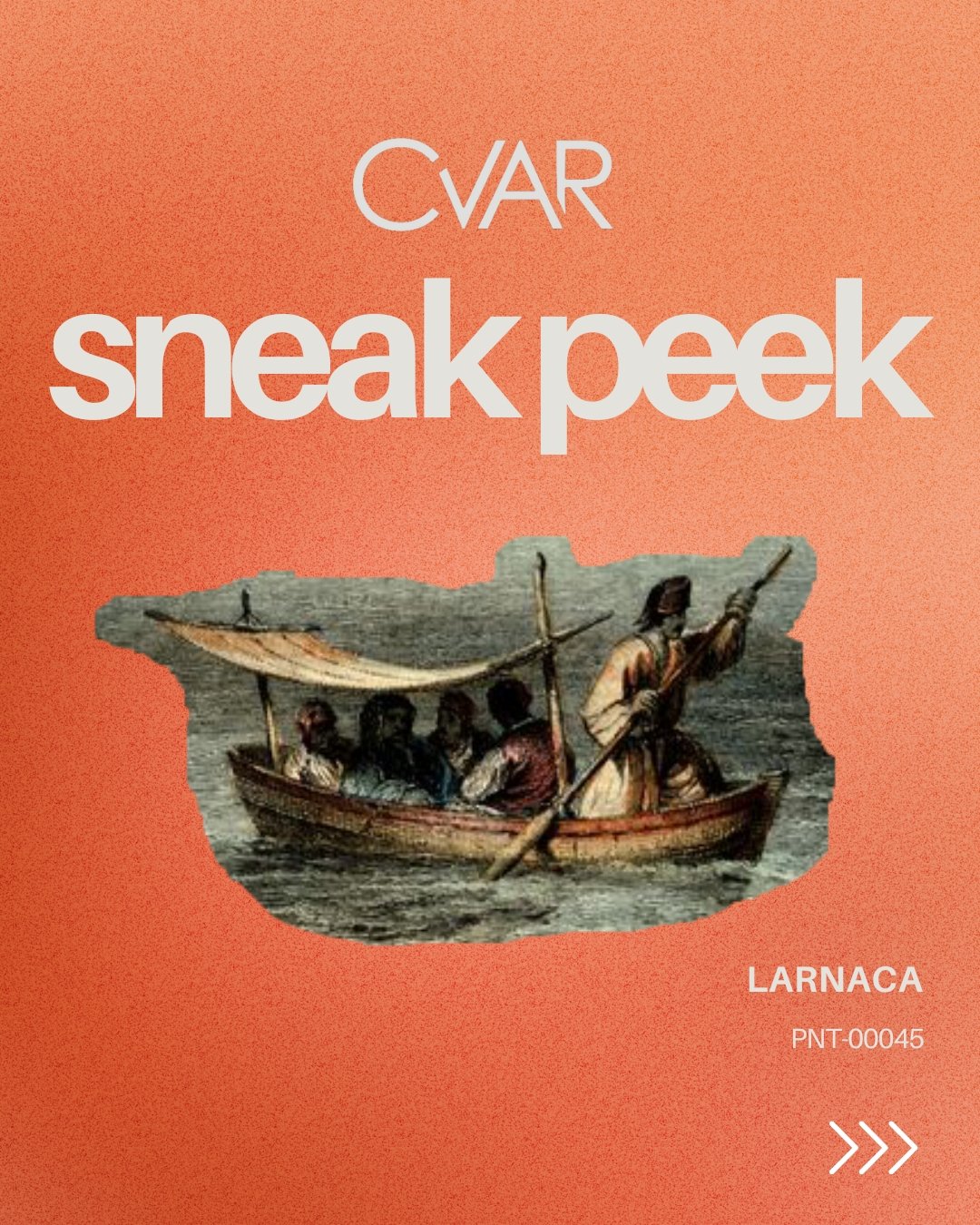Bartlett’s engraving from his trip to the East creates a powerful atmosphere rather than concentrating on identifiable features. It is the saleable mix of an attractive and exotic representation, and was perfect as a memento. Larnaca from the sea is depicted as an oriental town having the minaret as its focal point. The Ottoman attires worn by the figures in the boats add to the orientalization of the scene.
Bartlett was born in Kentish Town, London, England on 26 March 1809. He was apprenticed to John Britton (1771–1857), and became one of the foremost illustrators of topography of his generation. He travelled throughout Britain, and in the mid and late 1840s he travelled extensively in the Balkans and the Middle East. He made four visits to North America between 1836 and 1852.
Bartlett made sepia wash drawings the exact size to be engraved. His engraved views were widely copied by artists, but no signed oil painting by his hand is known.
Bartlett's primary concern was to render "lively impressions of actual sights", as he wrote in the preface to The Nile Boat (London, 1849). Many views contain some ruin or element of the past including many scenes of churches, abbeys, cathedrals and castles, and Nathaniel Parker Willis described Bartlett's talent thus: "Bartlett could select his point of view so as to bring prominently into his sketch the castle or the cathedral, which history or antiquity had allowed".
PNT-00045 > William Henry Bartlett (1809-1854), Larnaca, Engraving (coloured), 25x33 cm, 1853

The 'Sneak Peek' series is supported by The Hellenic Initiative Canada.







